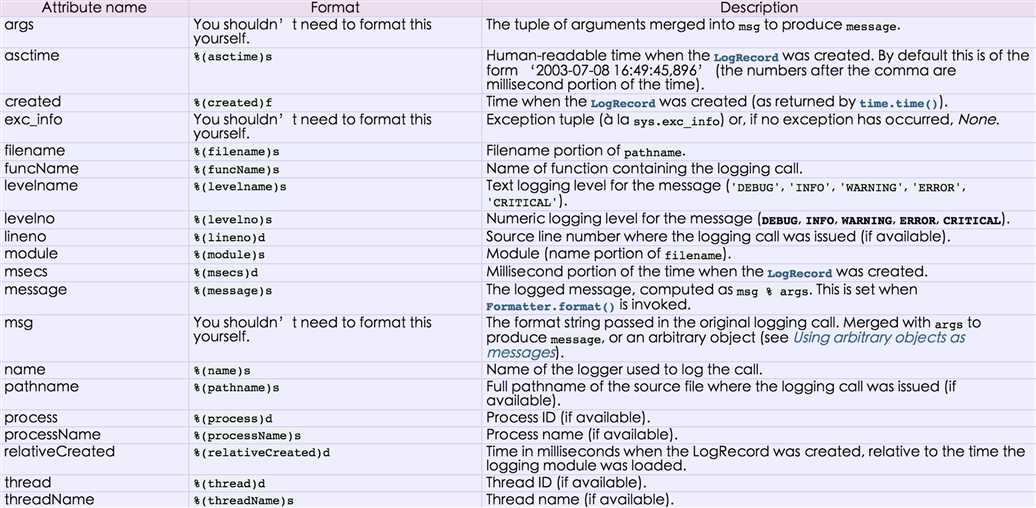标签:
执行系统命令
可以执行shell命令的相关模块和函数有:

import commands result = commands.getoutput(‘cmd‘) result = commands.getstatus(‘cmd‘) result = commands.getstatusoutput(‘cmd‘)
以上执行shell命令的相关的模块和函数的功能均在 subprocess 模块中实现,并提供了更丰富的功能。
subprocess
subprocess允许你能创建很多子进程,创建的时候能指定子进程和子进程的输入、输出、错误输出管道,执行后能获取输出结果和执行状态。
call
执行命令,返回状态码
shell=True ,参数会让subprocess.call 接受字符串形式的变量作为命令,并调用系统shell去执行这个字符串。
shell=False,subprocess.call只接受数组变量作为命令,并将数组的第一个元素作为命令,剩下的全部作为该命令的参数。
注:shell=False 的参数能让你的程序更加安全,尤其是当你的cmd变量值是从外部读取到的时候。官方声明里说要尽力避免使用shell=True这个参数。
check_call
执行命令,如果执行状态码是 0 ,则返回0,否则抛异常
check_output
执行命令,如果状态码是 0 ,则返回执行结果,否则抛异常
subprocess.Popen(...)
用于执行复杂的系统命令
参数:
eg:
>>> t = subprocess.Popen(["python"], stdin=subprocess.PIPE,stdout=subprocess.PIPE,stderr=subprocess.PIPE) >>> t.stdin.write("print 1\n") >>> t.communicate() (‘1\n‘, ‘‘)
注;subprocess.check_output(["df","-h", "|","grep","M"],shell=True) 在测试grep 时 未生效。
shutil
高级的 文件、文件夹、压缩包 处理模块
shutil.copyfileobj(fsrc, fdst[, length])
将文件内容拷贝到另一个文件中,可以部分内容
可选参数length指定缓冲区的大小,负数表示一次性读入。默认会把数据切分成小块拷贝,以免占用太多内存。
注意:拷贝是从fsrc的当前文件开始。
shutil.copyfile(src, dst)
拷贝文件
shutil.copymode(src, dst)
仅拷贝权限。内容、组、用户均不变
shutil.copystat(src, dst)
拷贝状态的信息,包括:mode bits, atime, mtime, flags
shutil.copy(src, dst)
拷贝文件和权限
shutil.copy2(src, dst)
拷贝文件和状态信息 类似shell命令cp -p
shutil.copytree(src, dst, symlinks=False, ignore=None)
递归的去拷贝文件
shutil.ignore_patterns(*patterns)
copytree的辅助函数,提供glob功能。
例如:copytree(source, destination, ignore=ignore_patterns(‘*.pyc‘, ‘tmp*‘))
shutil.rmtree(path[, ignore_errors[, onerror]])
递归的去删除文件
shutil.move(src, dst)
递归的去移动文件
shutil.make_archive(base_name, format,...)
创建压缩包并返回文件路径,例如:zip、tar
#将 /Users/wupeiqi/Downloads/test 下的文件打包放置当前程序目录 import shutil ret = shutil.make_archive("wwwwwwwwww", ‘gztar‘, root_dir=‘/Users/wupeiqi/Downloads/test‘) #将 /Users/wupeiqi/Downloads/test 下的文件打包放置 /Users/wupeiqi/目录 import shutil ret = shutil.make_archive("/Users/wupeiqi/wwwwwwwwww", ‘gztar‘, root_dir=‘/Users/wupeiqi/Downloads/test‘)
shutil 对压缩包的处理是调用 ZipFile 和 TarFile 两个模块来进行的,详细:

import zipfile # 压缩 z = zipfile.ZipFile(‘laxi.zip‘, ‘w‘) z.write(‘a.log‘) z.write(‘data.data‘) z.close() # 解压 z = zipfile.ZipFile(‘laxi.zip‘, ‘r‘) z.extractall() z.close()

import tarfile # 压缩 tar = tarfile.open(‘your.tar‘,‘w‘) tar.add(‘/Users/wupeiqi/PycharmProjects/bbs2.zip‘, arcname=‘bbs2.zip‘) tar.add(‘/Users/wupeiqi/PycharmProjects/cmdb.zip‘, arcname=‘cmdb.zip‘) tar.close() # 解压 tar = tarfile.open(‘your.tar‘,‘r‘) tar.extractall() # 可设置解压地址 tar.close()
logging
用于便捷记录日志且线程安全的模块
import logging logging.basicConfig(filename=‘log.log‘, format=‘%(asctime)s - %(name)s - %(levelname)s -%(module)s: %(message)s‘, datefmt=‘%Y-%m-%d %H:%M:%S %p‘, level=10) logging.debug(‘debug‘) logging.info(‘info‘) logging.warning(‘warning‘) logging.error(‘error‘) logging.critical(‘critical‘) logging.log(10,‘log‘)
同时将log输出到终端和写入文件
import logging logger = logging.getLogger(‘example‘) logger.setLevel(logging.DEBUG) # create file handler which logs even debug messages fh = logging.FileHandler(‘log.log‘) fh.setLevel(logging.WARNING) # create console handler with a higher log level ch = logging.StreamHandler() ch.setLevel(logging.DEBUG) # create formatter and add it to the handlers formatter = logging.Formatter(‘%(asctime)s - %(name)s - %(levelname)s - %(message)s - %(thread)d‘) ch.setFormatter(formatter) fh.setFormatter(formatter) # add the handlers to logger logger.addHandler(ch) logger.addHandler(fh) # ‘application‘ code logger.debug(‘debug message‘) logger.info(‘info message‘) logger.warn(‘warn message‘) logger.error(‘error message‘) logger.critical(‘critical message‘)
对于等级:
只有大于当前日志等级的操作才会被记录。
对于格式,有如下属性可是配置:

time
时间相关的操作,时间有三种表示方式:
import datetime
datetime.date:表示日期的类。常用的属性有year, month, day
datetime.time:表示时间的类。常用的属性有hour, minute, second, microsecond
datetime.datetime:表示日期时间
datetime.timedelta:表示时间间隔,即两个时间点之间的长度
timedelta([days[, seconds[, microseconds[, milliseconds[, minutes[, hours[, weeks]]]]]]])
strftime("%Y-%m-%d")
print time.time() print time.mktime(time.localtime()) print time.gmtime() #可加时间戳参数 print time.localtime() #可加时间戳参数 print time.strptime(‘2014-11-11‘, ‘%Y-%m-%d‘) print time.strftime(‘%Y-%m-%d‘) #默认当前时间 print time.strftime(‘%Y-%m-%d‘,time.localtime()) #默认当前时间 print time.asctime() print time.asctime(time.localtime()) print time.ctime(time.time()) import datetime ‘‘‘ datetime.date:表示日期的类。常用的属性有year, month, day datetime.time:表示时间的类。常用的属性有hour, minute, second, microsecond datetime.datetime:表示日期时间 datetime.timedelta:表示时间间隔,即两个时间点之间的长度 timedelta([days[, seconds[, microseconds[, milliseconds[, minutes[, hours[, weeks]]]]]]]) strftime("%Y-%m-%d") ‘‘‘ import datetime print datetime.datetime.now() print datetime.datetime.now() - datetime.timedelta(days=5)
注:相差的日期通过days 获取
d1 = datetime.datetime(2015,12,10)
d2 = datetime.datetime(2015,12,1)
d3 = (d1-d2).days
re
re模块用于对python的正则表达式的操作。
字符:
. 匹配除换行符以外的任意字符
\w 匹配字母或数字或下划线或汉字
\s 匹配任意的空白符
\d 匹配数字
\b 匹配单词的开始或结束
^ 匹配字符串的开始
$ 匹配字符串的结束
次数:
* 重复零次或更多次
+ 重复一次或更多次
? 重复零次或一次
{n} 重复n次
{n,} 重复n次或更多次
{n,m} 重复n到m次
匹配IP:
t = ‘‘inet 192.168.100.100 netmask 255.255.255.0 broadcast 192.168.255.255‘ re.search(r‘(?<![\.\d])(?:\d{1,3}\.){3}\d{1,3}(?![\.\d])‘,t).group() re.search(r‘(\d{1,2}|1\d\d|2[0-4]\d|25[0-5])\.(\d{1,2}|1\d\d|2[0-4]\d|25[0-5])\.(\d{1,2}|1\d\d|2[0-4]\d|25[0-5])\.(\d{1,2}|1\d\d|2[0-4]\d|25[0-5])‘,t).group() re.search(r‘\b(?:(?:25[0-5]|2[0-4][0-9]|[01]?[0-9][0-9]?)\.){3}(?:25[0-5]|2[0-4][0-9]|[01]?[0-9][0-9]?)\b‘,t).group()
-------------------------------------------类
一、类定义:
class <类名>: <语句>
二、类的方法
在类地内部,使用def关键字可以为类定义一个方法,与一般函数定义不同,类方法必须包含参数self,且为第一个参数。
其中直接定义在类体中的变量叫类变量,而在类的方法中定义的变量叫实例变量。类的属性包括成员变量和方法。
class people: #定义基本属性 name = ‘‘ age = 0 #定义私有属性,私有属性在类外部无法直接进行访问 __weight = 0 #定义构造方法 def __init__(self,n,a,w): self.name = n self.age = a self.__weight = w def speak(self): print("%s is speaking: I am %d years old, weight %s" %(self.name,self.age,self.__weight)) p = people(‘tom‘,10,30) p.speak()
类实例化后,可以使用其属性,实际上,创建一个类之后,可以通过类名访问其属性
如果直接使用类名修改其属性,那么将直接影响到已经实例化的对象
【类属性和实例属性】
1、对于公有的类属性,在类外可以通过类对象和实例对象访问。 class people: name = ‘jack‘ #公有的类属性 __age = 12 #私有的类属性 p = people() print p.name #正确 print people.name #正确 print p.__age #错误,不能在类外通过实例对象访问私有的类属性 print people.__age #错误,不能在类外通过类对象访问私有的类属性复制代码 2、实例属性是不需要在类中显示定义的,比如: class people: name = ‘jack‘ p = people() p.age =12 print p.name #正确 print p.age #正确 print people.name #正确 print people.age #错误 3、在类外对类对象people进行实例化之后,产生了一个实例对象p,然后p.age = 12这句给p添加了一个实例属性age,赋值为12。 这个实例属性是实例对象p所特有的,注意,类对象people并不拥有它(所以不能通过类对象来访问这个age属性)。 当然还可以在实例化对象的时候给age赋值。 class people: name = ‘jack‘ def __init__(self,name,age): self.name = name self.age = age p = people(‘alex‘,12) print p.name #正确 print p.age #正确 print people.name #正确 print people.age #错误 如果需要在类外修改类属性,必须通过类对象去引用然后进行修改。 如果通过实例对象去引用,会产生一个同名的实例属性,这种方式修改的是实例属性,不会影响到类属性, 并且之后如果通过实例对象去引用该名称的属性,实例属性会强制屏蔽掉类属性,即引用的是实例属性,除非删除了该实例属性。 class people: country = ‘china‘ print people.country p = people() print p.country p.country = ‘japan‘ print p.country #实例属性会屏蔽掉同名的类属性 print people.country del p.country #删除实例属性 print p.country
标签:
原文地址:http://www.cnblogs.com/wjx1/p/5021276.html